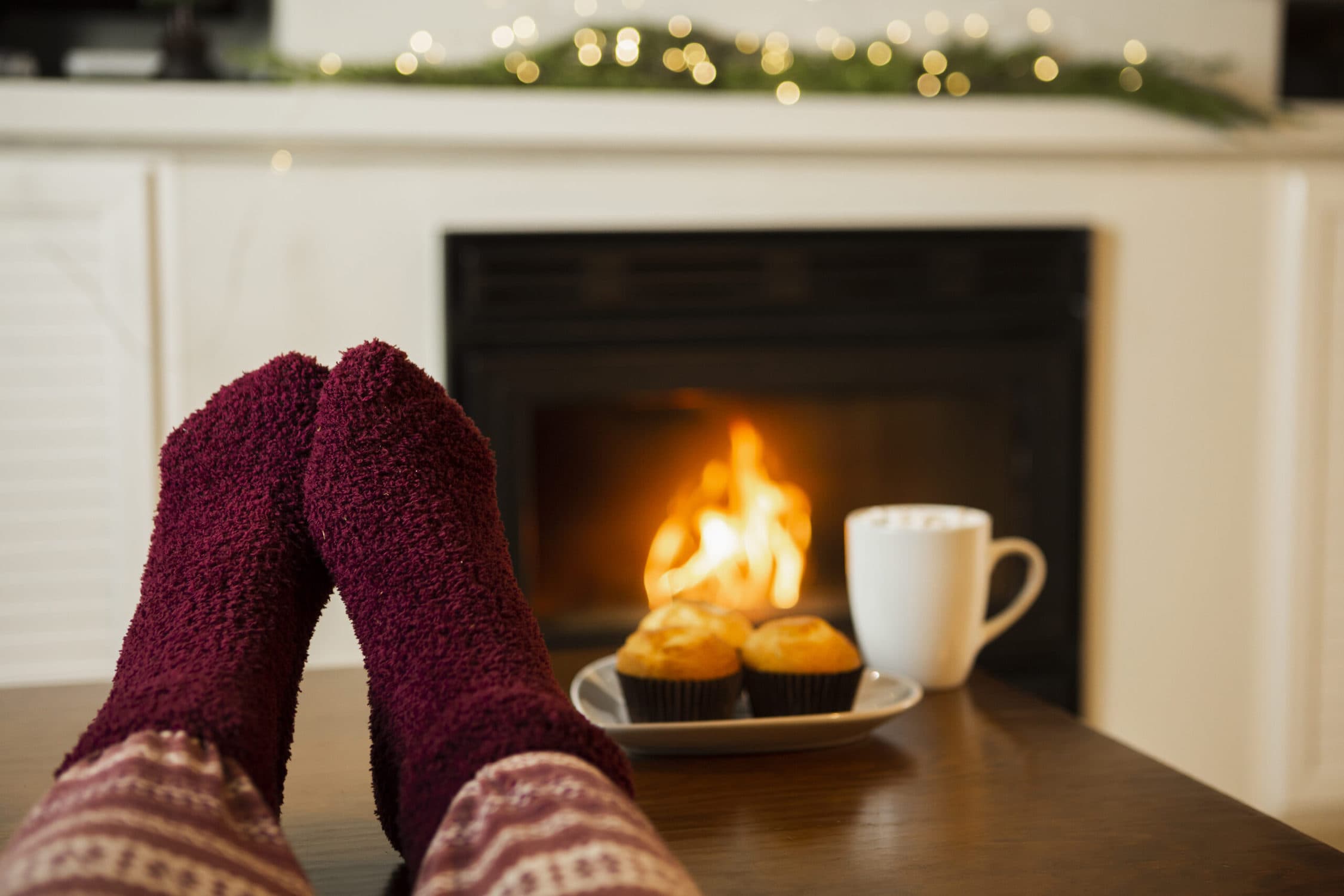
Few things are as enjoyable as relaxing in front of a fire, watching the flames crackle. Fireplaces have become safer and are more widely available than ever before. There are even television stands with a built-in fireplace to add ambiance while being functional.
Here, we will give you all the information you need on the types of fireplaces on the market, how they work, and which brands to look at first.
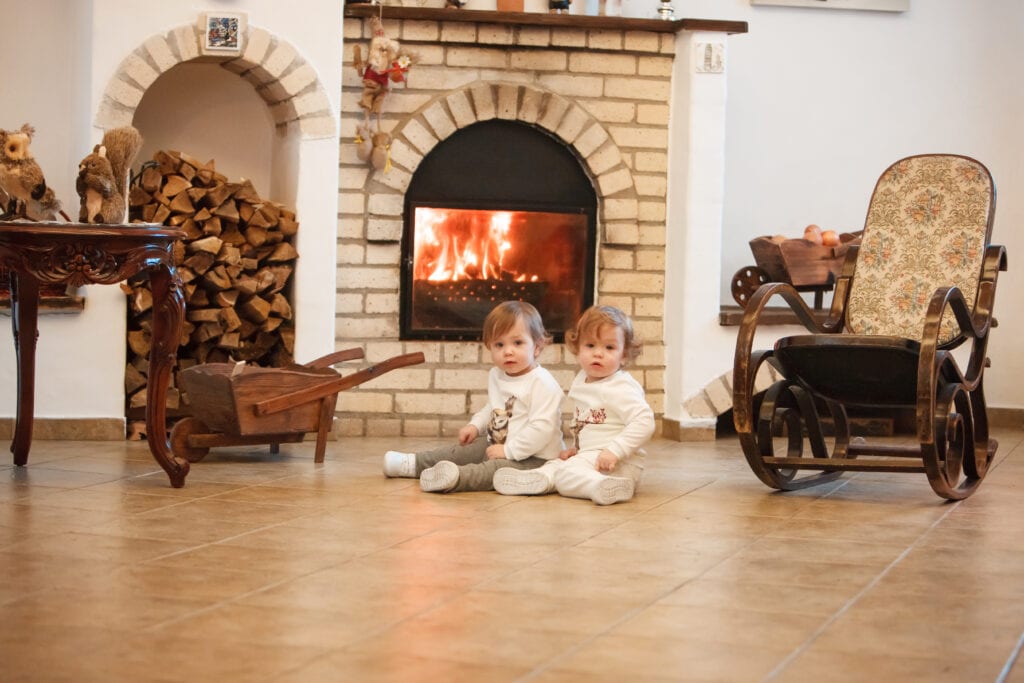
If you’d rather skip around, use the table of contents below to take you to where you want to go.
Fireplace Basics
A fireplace can be a great way to add heat to your home and look great at the same time. If you are looking for a fireplace for your home but want to know more about them, here’s a bit of basic info for you.
What is a Fireplace?
Everyone knows a fireplace is a place to build a fire inside a home (usually). They come in many forms but all are made of fire-resistant materials like stone, metal, or brick to contain the hot flames they produce.
A full fireplace comes with the entire outer structure including necessary masonry. A relatively newer option, called a fireplace insert, fits inside an existing fireplace structure and is a self-contained box encased in steel or cast iron.
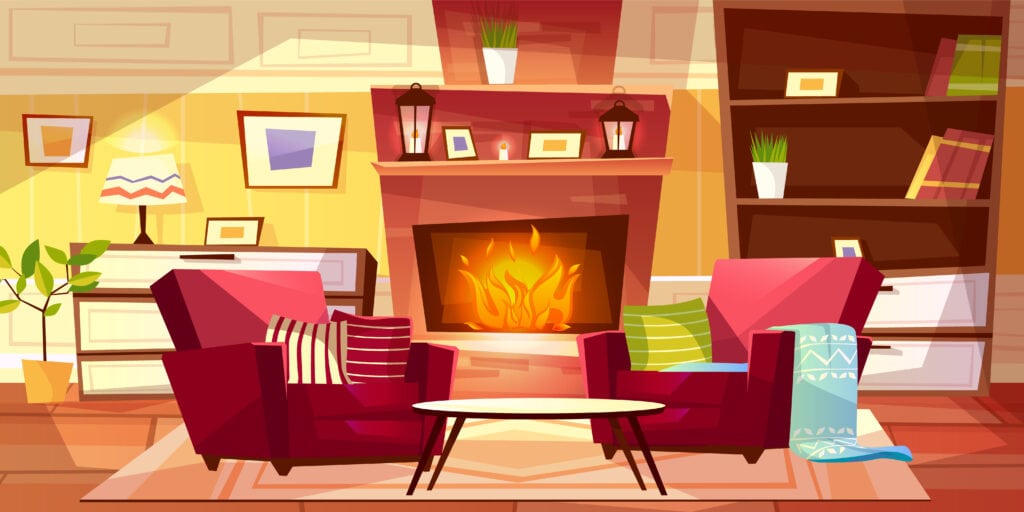
How Does a Fireplace Work?
Fireplaces work by creating fire. Traditional fireplaces use wood which must be manually ignited and stoked to create flames. These use an open combustion system where air from the surrounding area flows into the open fireplace where it supplies oxygen to the fire. A chimney or flue allows smoke and exhaust to exit the home as the wood burns.
Newer fireplaces use a variety of methods to produce fire. There are gas, electric, propane, wood, pellet, and coal options available. These are smaller than a traditional fireplace and fit inside the existing structure. These closed combustion systems have a glass front to contain the heat and draw in outside air to use for combustion. These are often accompanied by a fan or blower which distributes the heat throughout a room. Gas and propane options are hooked up to the gas source and use a switch to instantly produce flames.
Electric inserts do not produce actual fire but instead are made to look like flames. In these units, electricity powers a heating element which produces heat and then a blower distributes the air into the room. An LED screen or special lights are used to produce the flame effect. These can often be used without heat just to add ambiance.
Coal, pellet, and wood fireplace inserts must have fuel added regularly to keep them going. However, these still utilize the closed combustion chamber.
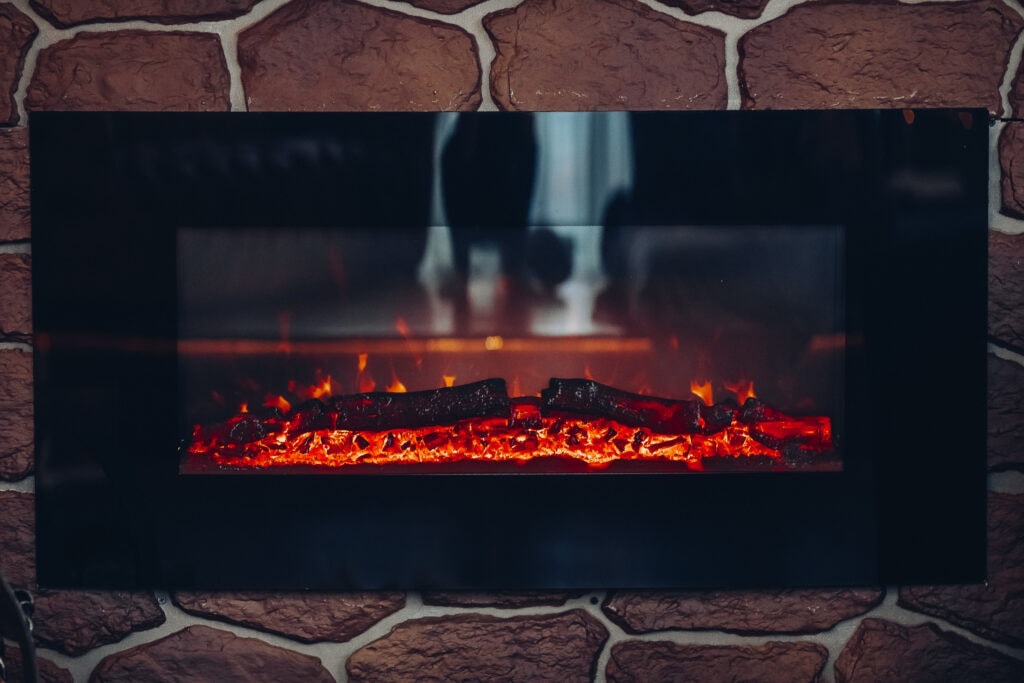
Types of Fireplaces
Fireplaces can be divided by fuel as described above. They can also be categorized by the way they are mounted. Here are some types of fireplaces.
Electric
Electric fireplaces use only electricity to power and can be free-standing, come as an insert, or can be wall-mounted. Infrared electric fireplaces are some of the most efficient in this category. These all use heating elements to produce heat and most use a blower fan to distribute warmth.
Gas
Gas fireplaces use natural gas or propane to produce flames. These can save money on electric bills and are a good option for homes with existing gas lines or access to a propane tank. These come in free-standing, direct vent, and ventless options.
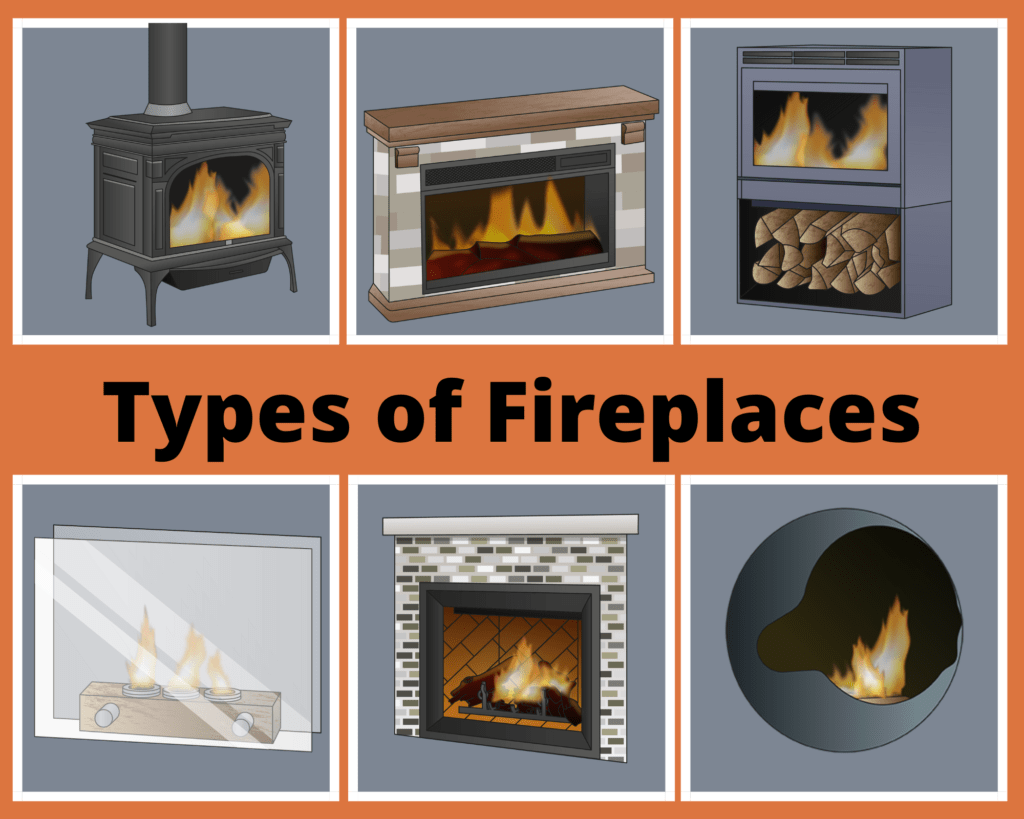
Ethanol
Some fireplaces use clean-burning ethanol to produce flames and heat. These do not produce as much heat as other options but come in wall-mount, insert, and tabletop options.
Wood
Wood burning fireplaces use either wood pellets or logs which are burned to create heat. This is the most traditional type and can come in open or closed combustion models. You can also get a wood-burning stove that utilizes a pipe to vent exhaust. All wood-burning fireplaces must be vented outside in some way, however they produce the warmth and satisfying crackle many people desire.
This is not an exhaustive list, and we can’t fail to mention a few other notable types such as gel and water vapor fireplaces. Still others are made to be used outdoors or are installed as an indoor/outdoor option. Research your preferred type to find the best options.
Read Before Buying
Before you head out to purchase a fireplace, there are a few things you need to consider. Ensuring you are armed with the proper information will keep you from purchasing a unit you will regret buying down the road.
What Size Fireplace Do I Need?
Your first consideration is the size of a fireplace. This is dependent upon a few things.
Size of Opening
If you have an existing fireplace opening, you will need to be sure the insert will fit inside. If cutting into a wall for a new install, you need to take into account how large the firebox is as well as add 18-24” to each side to account for the surrounding masonry.
BTU
The second size consideration is the amount of BTU. This tells how much heat a fireplace can produce and thus, how large of a space it can heat. Are you hoping to heat your entire house or a single area? Here is a helpful BTU calculator to get you started.
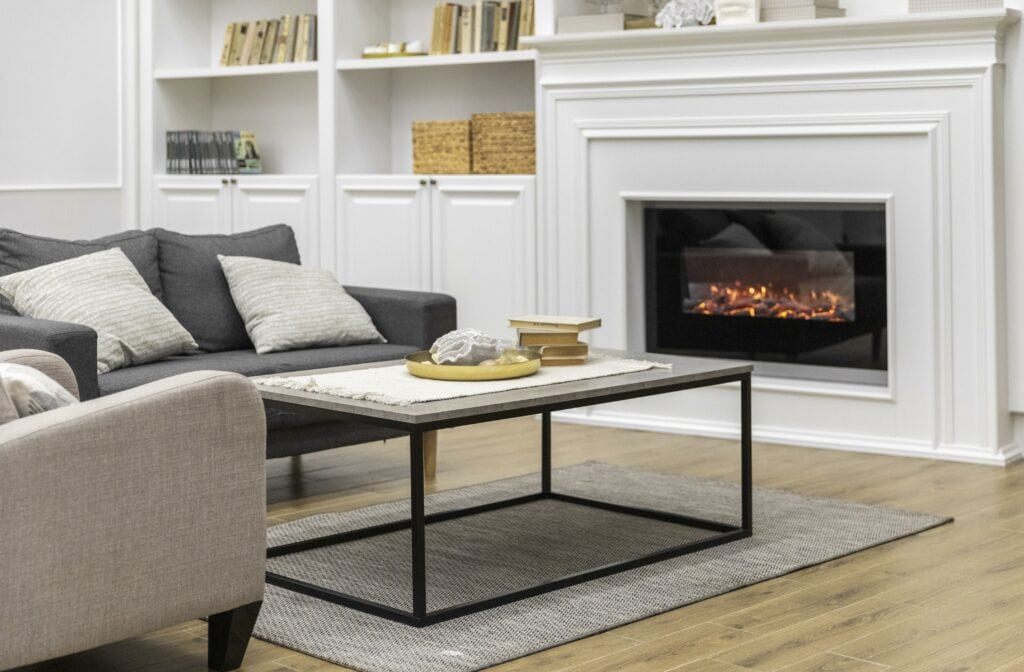
How to Choose a Fireplace
Once you know the size of your opening and desired BTU, you still have a few factors to consider.
Location
Where will your fireplace be located? Will it be mounted to a wall or is it a free-standing unit? If so, you’ll need to ensure proper spacing around to eliminate a fire hazard. Free-standing units also need a fireproof base to sit on.
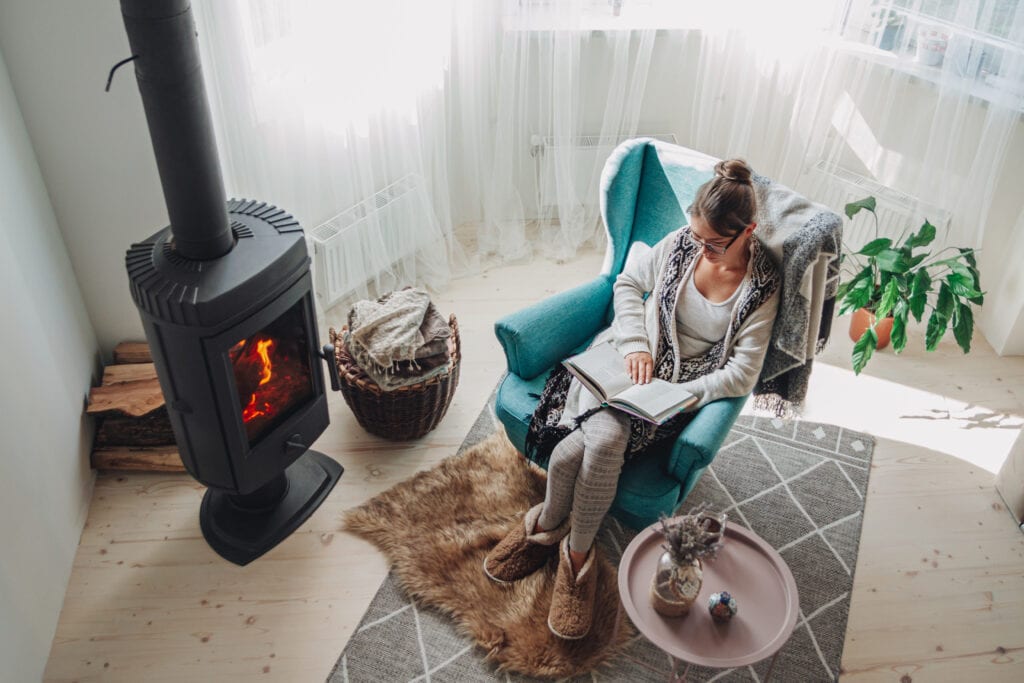
Fuel Type
Do you want to simply flip a switch and have your fire instantly appear? Or do you prefer to feed fuel to your fireplace regularly? Do you have gas lines or an easy way to hook up a propane tank? Consider the amount and storage availability for wood or coal-based fuels.
Installation
If you don’t already have a fireplace enclosure, you need to consider both the cost and space needed. If an enclosure exists, does it have proper ventilation? Is this a project you can do yourself or will you need to hire a professional? For free-standing units, many still require a flue or pipe to vent. If an opening does not already exist, you will need to create one.
Functionality
Do you need an option that can be automatically set and controlled? Or one with a remote control? Also consider whether you intend to use the flames without heat.
Noise
The amount of noise a unit makes can adversely affect the activities of those nearby. Consider whether a fan running or crackling of a fire will disturb you or others.
Cost
Be sure to decide on how much you can afford and find an option that fits your budget.
Popular Fireplace Brands
When looking for a fireplace, you’ll find many options available. Many manufacturers are experts who strive to continue creating more efficient, attractive models. Here are a few brands that stand out with their products. Click on the links to navigate to the associated brand reviews.
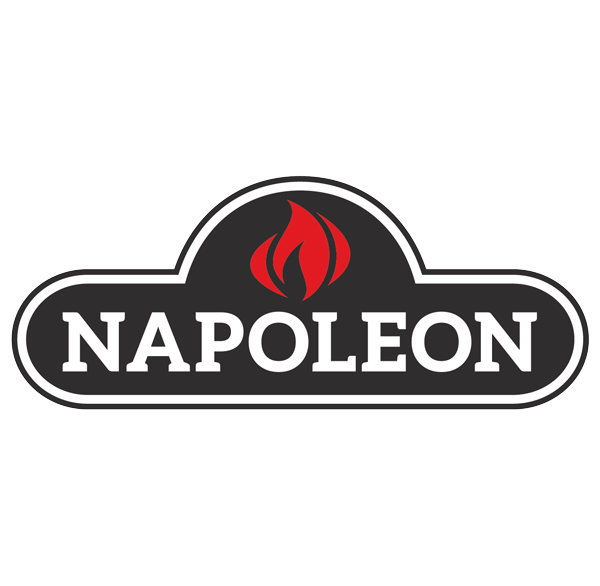
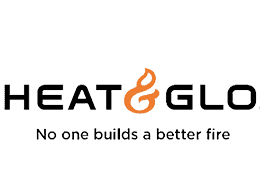
Top Fireplace Brands
● Dimplex
● Heat & Glo
● Jotul
● Kozy Heat
● Monessen
● Napoleon
Fireplace Maintenance Tips
Fireplaces have to be maintained to ensure proper operation. This includes cleaning ashes and the chimney (when applicable) and ensuring proper ventilation. Wiping down self-contained units will keep them attractive and operational for years to come.
Common Fireplace Issues and Troubleshooting
Anything worth having will occasionally have a problem or two. Here are some common issues you might experience with your fireplace.
Chimney and Airflow
When wood burns, a dark-colored tar called creosote attaches to the inside of the chimney. This build up of tar, blockages, flue cracks, and damage to the chimney can cause your fireplace venting to be restricted. Not opening the damper properly can also cause airflow issues.
If your unit does not have proper airflow, it may be due to moisture buildup in the vent. In this case, a thorough cleaning of the pipe or chimney may be necessary.
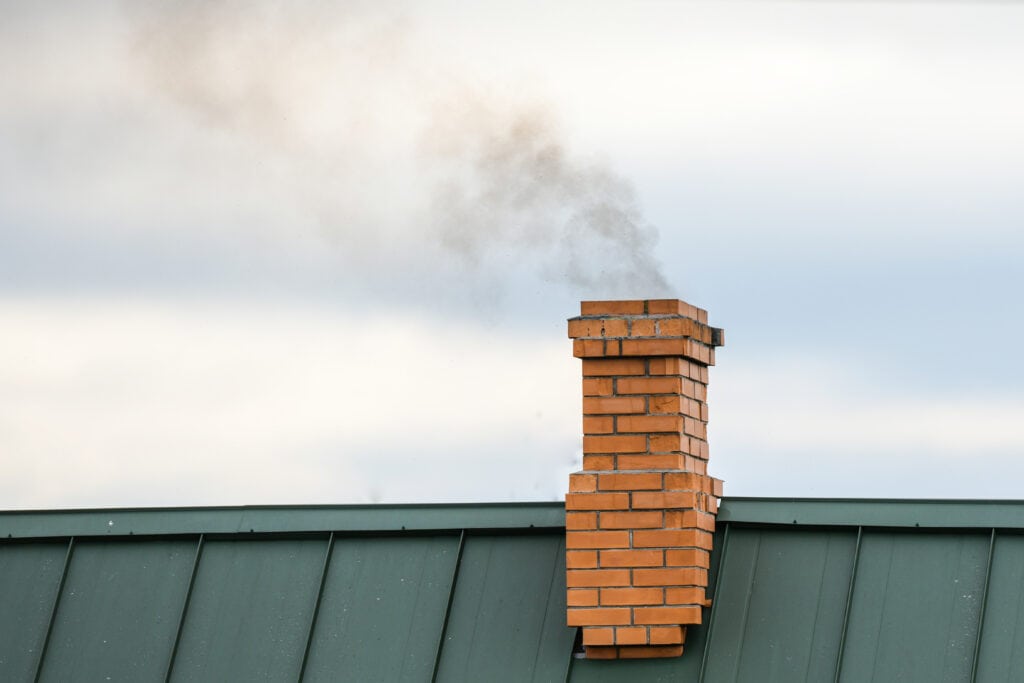
There’s Water In My Fireplace
When using a vent that leads outside, water can get in. This is an issue and may cause your fireplace to have trouble igniting. Ensure your chimney or flue has a properly fitting cap to prevent this from occurring.
Why Do I Smell Gas?
The distinctive rotten egg smell produced by gas can be concerning. This requires evaluation by a professional to determine if there’s a leak, where it is coming from and to properly vent it from your home.

My Pilot Light Is Out
This can occur due to a draft, water in the unit, or problems with the gas flow. First, try to light the pilot. If this does not work, call a professional to determine the issue.
Fireplace Won’t Light
In a gas fireplace, a thermocouple or thermopile uses electricity to ignite a flame. If these are not functioning properly, you need to check for loose connections, ensure the power is on, and these are hooked up correctly. In general, repairing one of these requires a professional due to the difficulty level.
Why Is My Fireplace So Noisy?
A noisy fireplace is usually caused by issues with the blower or fan. Try turning the fan off to see if the problem resolves. If so, examine the fan for loose parts or whether a replacement is necessary.
Fireplaces are tricky and the more components, the more potential issues they can have. If you are having problems, your best bet is to check the chimney, electrical, gas hookups, screws, and connections. When in doubt, reach out to a professional to avoid causing damage to your unit, home, or yourself.
How to Install a Fireplace
Installing a fireplace really depends on what type you have decided to purchase. We will start with framing the fireplace but you can skip ahead if that part is already complete. Be sure to consult your owner’s manual for any specific instructions or nuances.
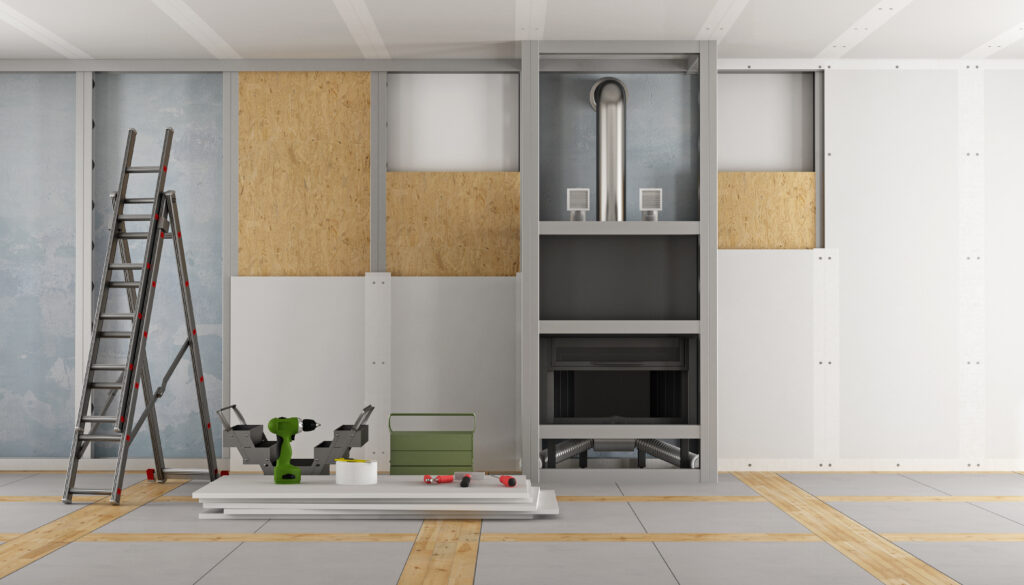
1. Frame the opening and sides of your fireplace. This will likely start with wood and then be finished with drywall, tile, stone, and/or brick.
2. Install venting components. Some units are ventless but this will be discussed in your manual if it is the case. This includes venting pipes and a chimney with a damper if necessary. Be sure to vent your unit properly to avoid any dangerous fumes.
3. Build the base of your fireplace. This will elevate your unit above the floor level to provide more heat.
4. Install the fireplace housing into the frame to be sure it fits.
5. Connect all venting, electrical, gas, and plumbing connections as required.
6. Finish the mantel and hearth area and seal. Be sure not to block any louvers or vents.
If inserting a fireplace into an existing hearth, all you’ll need to do is verify venting, connect and secure the unit, and you’re ready to go. Here is a video of a complete gas fireplace installation to help you out.
How to Clean a Fireplace
Cleaning your fireplace is essential to keeping it operating properly. Here is how to keep it clean. Chimney cleaning also needs to be done regularly but we won’t be going into the details.
Wood Burning
In a wood-burning fireplace, wait at least 12 hours after the last fire to ensure there are no embers. Even then, carefully probe the ashes and use caution in case hot spots are present.

1. Remove all ashes and residue from bottom of fireplace
2. Use a dry brush to loosen creosote, ash, and dirt from sides and grate. Sweep or scoop out as much as possible to make your next steps easier
3. Use a mixture of water and dish detergent to scrub the grate or andiron. Once clean, dry and set aside.
4. Spray inside of fireplace with approved fireplace cleaner and allow to soak
5. Using a brush, scrub the walls starting at the top and working down. Wipe and soak up excess and loosened dirt as necessary. Repeat until desired effect is achieved
6. If you have glass doors, use a glass cleaner or vinegar/water mixture to clean the glass. Use ashes or salt as a gentle abrasive to remove stubborn build-up
7. Wipe down and vacuum any external molding and space in front of the fireplace
8. Replace grate, ensure all surfaces are dry, then build your next fire
Gas Fireplaces
1. Ensure the unit and all parts are completely cool. This should be done at least 6 hours after last use
2. Turn off the gas valve
3. Remove glass and set aside. Inspect all connections and gaskets for damage
4. Use a handheld vacuum or vacuum attachment to remove any dust or dirt
5. Remove logs and lava rocks. Lava rocks can be soaked in water to clean, while logs need to be vacuumed or use compressed air to blow out any crevices (take a picture to remember how to put them back)
6. Clean the glass with glass cleaner and clean the fireplace screen (if present)
7. Remove shield or cover to access the burner and thermocouple
8. Vacuum or used compressed air to remove any visible debris
9. Replace all parts in reverse, then turn on the gas valve. Be on the lookout for gas leaks when turning the gas back on
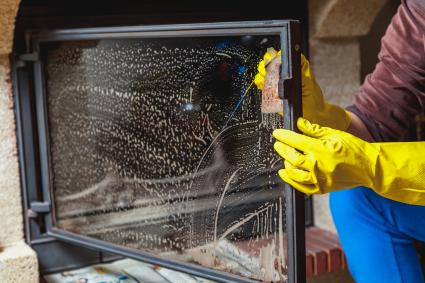
How Often Should I Clean a Fireplace?
Your fireplace needs to be cleaned annually at a minimum. Wood burning fireplaces also need the chimney cleaned at this time or when ⅛ inch of build-up in the chimney. If you use your fireplace year-round, it may need more frequent cleaning.
When is it Time to Replace My Fireplace?
Fireplaces are designed to last up to 30 years. However, most make it 10-15. If you are considering whether it’s time for a new fireplace, here are some indicators it is time.
Your Fireplace is Old
If you’ve had your unit for more than 10-15 years and are bored or it isn’t as great as it used to be, a new model should be considered. Newer units have more features and are safer and more efficient.
Your Fireplace Always Seems to Need Repair
If you are having to fix issues constantly or the operation is sporadic, you should consider a new unit.
Can’t Keep Up on Chimney Maintenance
The good news is that if you hate doing chimney maintenance, you can get an insert that fits in your existing fireplace eliminating the need for tedious cleaning.
Style Update
Maybe you are remodeling or looking to increase your home’s aesthetic. Or perhaps you are selling your home and want a more modern (or traditional) look. This is a good time to consider a replacement.
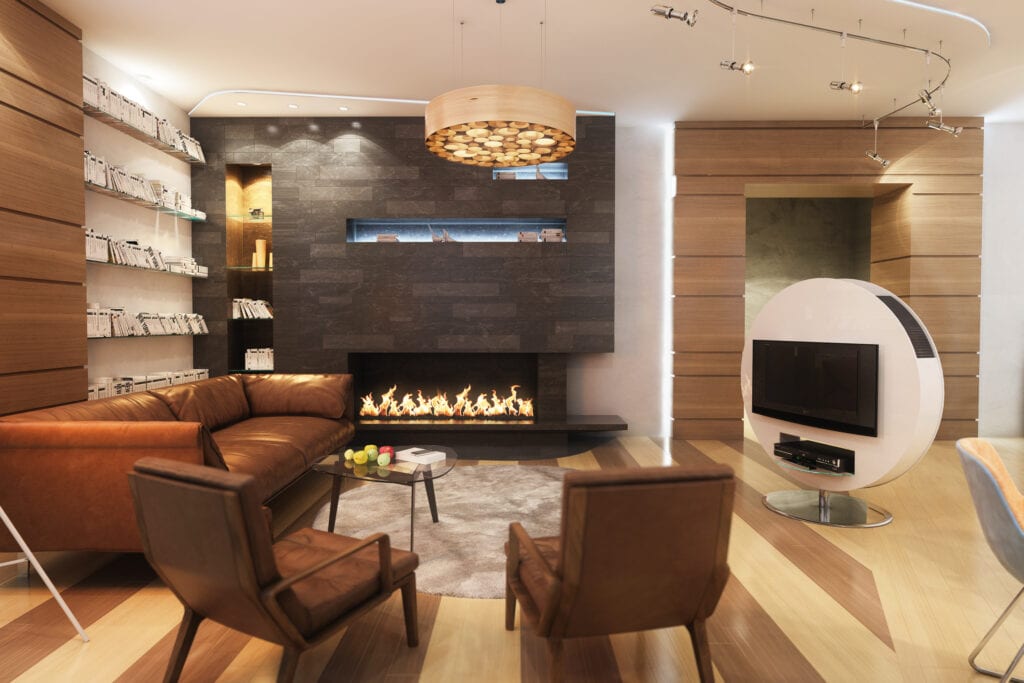
Can You Really Find a Quality Fireplace That’s Affordable?
You can definitely find a fireplace you can afford from the multitude of options out there. Inserts are an inexpensive option that can fit in most budgets. If you want to replace an entire fireplace, of course, that comes with significant cost and labor.
Once you determine what you really need, you can weigh the options out there for one that is a perfect fit. If your budget is small, keep realistic expectations.
Conclusion
Fireplaces are a great way to add heat and set the mood in your home. No matter what you are looking for, a growing variety of models are out there.
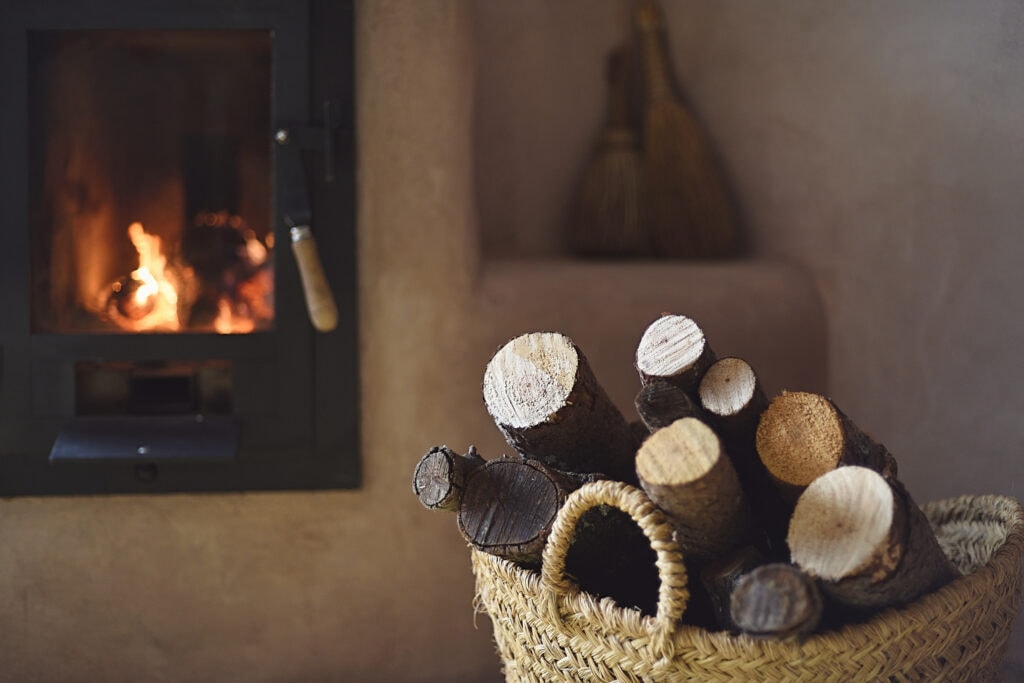
Hopefully, you’ve found what you were looking for in the article above. If not, click around the attached links to learn and discover more. Thanks for reading!
